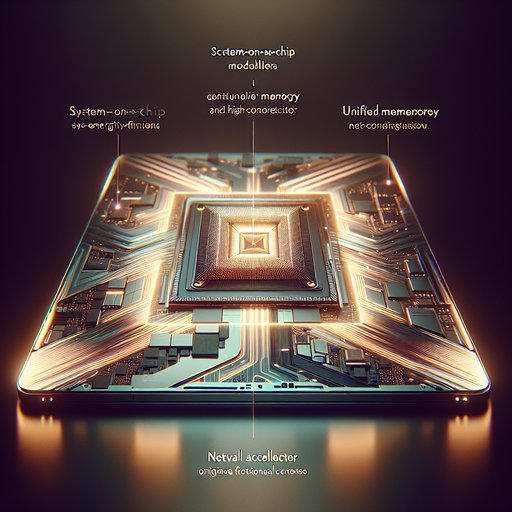To select 30 stocks from Asia (excluding Russia) with global influence comparable to Apple and Coca-Cola, the companies should drive regional indices (e.g., Nikkei 225, Hang Seng, KOSPI) or influence global sectors like technology, automotive, consumer goods, or finance. Ensured is a mix of countries (e.g., China, Japan, South Korea, Taiwan, India) and sectors, using data from financial sources, market trends, and web insights (e.g., companiesmarketcap.com, CNBC, Reuters).
Selection Criteria
- Global Influence: Companies with large market caps (>€50 billion for top-tier, >€5 billion for niche leaders), global operations, or brand recognition, similar to Apple’s tech dominance or Coca-Cola’s consumer reach.
- Market Impact: Stocks that significantly affect indices like Nikkei 225, Hang Seng, or Taiwan Weighted, or influence global commodity, tech, or consumer markets.
- Sector Diversity: Covering technology, consumer staples, automotive, finance, healthcare, and industrials, reflecting Apple’s innovation and Coca-Cola’s brand power.
- Mandatory Inclusions: BYD, XPeng, Toyota, Samsung, TSMC (China: BYD, XPeng; Japan: Toyota; South Korea: Samsung; Taiwan: TSMC).
- Geographic Spread: Focus on major economies (China, Japan, South Korea, Taiwan, India) but include Southeast Asia (e.g., Singapore, Indonesia) for diversity.
- Data Basis: Market caps are approximate as of 2025, sourced from web data (e.g., companiesmarketcap.com, Investing.com) and financial reports. Recent web results on BYD, XPeng, Toyota, Samsung, and TSMC provide context on their EV and tech influence.
Asia’s stock markets are diverse, with Japan (~$6 trillion), China (~$10 trillion), and South Korea/Taiwan (~$2 trillion each) hosting global giants. Unlike Apple, few Asian firms reach trillion-dollar valuations, but companies like TSMC or Tencent rival Coca-Cola’s global sector influence. The provided web results highlight BYD’s EV leadership, XPeng’s growth, Toyota’s legacy, Samsung’s tech supply chain, and TSMC’s chip dominance, integrated where relevant.
Selected 30 Asian Stocks
Below are 30 stocks, including the 5 specified by the user, organized by sector and country. Each is chosen for its influence on markets, sectors, or global trends, with comparisons to Apple or Coca-Cola. Market caps are in USD (converted at ~1 EUR = 1.05 USD) as of 2024/2025 estimates.
Technology (8 Stocks)
- Taiwan Semiconductor Manufacturing Company (TSMC) (2330.TW, Taiwan)
- Market Cap: ~$1 trillion
- Influence: World’s largest dedicated semiconductor foundry, producing chips for Apple, NVIDIA, and AMD. Its 30% weight in Taiwan’s Taiex and $184 billion in chip exports (25% of Taiwan’s GDP) mirror Apple’s tech dominance. TSMC’s AI chip demand drove a bullish outlook at Semicon Taiwan 2024, despite a 5.5% stock drop amid NVIDIA’s sell-off.
- Why: User-specified; Apple-like tech backbone.
- Samsung Electronics (005930.KS, South Korea)
- Market Cap: ~$400 billion
- Influence: Global leader in memory chips, smartphones, and displays, supplying Apple’s screens and batteries. Its 3% stock drop after Apple’s 2024 downgrade shows market linkage. Samsung’s AI optimism at Semicon Taiwan 2024 highlights its tech influence, akin to Apple’s ecosystem.
- Why: User-specified; tech sector giant.
- Tencent Holdings (0700.HK, China)
- Market Cap: ~$500 billion
- Influence: China’s tech titan (WeChat, gaming), with 3.07% stock gains post-Trump tariff pause in 2025. Its social and gaming platforms rival Apple’s consumer tech reach.
- Why: Social media and tech leader.
- Alibaba Group (BABA, NYSE/HKEX, China)
- Market Cap: ~$250 billion
- Influence: E-commerce and cloud leader, with 3.09% stock rise post-tariff pause. Like Amazon, it shapes Asia’s digital economy, with global cloud ambitions.
- Why: E-commerce equivalent to Apple’s ecosystem.
- MediaTek (2454.TW, Taiwan)
- Market Cap: ~$80 billion
- Influence: Major chip designer for smartphones and IoT, powering devices like MediaTek Dimensity 8100. A TSMC client, it supports global tech supply chains.
- Why: Strengthens semiconductor sector.
- SoftBank Group (9984.T, Japan)
- Market Cap: ~$100 billion
- Influence: Tech investment conglomerate, with stakes in AI and startups. Its 1.53% gain post-tariff pause reflects tech optimism.
- Why: Tech investment influencer.
- Tokyo Electron (8035.T, Japan)
- Market Cap: ~$80 billion
- Influence: Semiconductor equipment maker, up 2.82% post-tariff pause. Critical for chip production, it supports TSMC and Samsung.
- Why: Tech supply chain leader.
- Advantest Corp (6857.T, Japan)
- Market Cap: ~$40 billion
- Influence: Semiconductor testing equipment leader, up 5% post-tariff pause but down 4.4% pre-TSMC earnings in 2023. Its role in chip testing mirrors TSMC’s production.
Why: Niche tech player.
Automotive (5 Stocks)
- Toyota Motor (7203.T, Japan)
- Market Cap: ~$250 billion
- Influence: World’s largest automaker by volume, with 5.1% sales growth in H1 2023 driven by hybrids and Japan demand (33.2% sales jump). Its $42 billion potential buyout of Toyota Industries in 2025 boosted shares 5.61%. Like Coca-Cola, it’s a global brand staple.
- Why: User-specified; automotive legacy leader.
- BYD Company (1211.HK, China)
- Market Cap: ~$100 billion
- Influence: China’s top EV maker, surpassing Toyota in Singapore (6,191 vs. 5,736 cars in 2024) and Tesla in UK sales. Its 3 million+ new energy vehicles in 2023 (1.6 million battery EVs) and Super e-Platform (1,000 kW charging) challenge Tesla, with 4.22% stock gains post-tariff pause.
Why: User-specified; EV disruptor like Apple in tech.
- XPeng Inc (XPEV, NYSE/HKEX, China)
- Market Cap: ~$20 billion
- Influence: Chinese EV maker, with 91,507 Q4 2024 deliveries (52% YoY growth) and 14.46% stock surge post-tariff pause. Its G6 SUV and SEPA2.0 platform reduce costs, but it lags BYD. Volkswagen’s $700 million investment signals global potential.
- Why: User-specified; emerging EV innovator.
- Honda Motor (7267.T, Japan)
- Market Cap: ~$50 billion
- Influence: Global automaker with strong hybrid and motorcycle sales, operating in 150+ countries. Its brand reliability mirrors Coca-Cola’s consumer trust.
- Why: Complements Toyota’s legacy.
- Li Auto (LI, NASDAQ/HKEX, China)
- Market Cap: ~$40 billion
- Influence: Chinese EV maker, up 9.35% post-tariff pause. Its hybrid SUVs compete with BYD, with strong domestic sales.
- Why: Strengthens EV sector.
Consumer Staples (4 Stocks)
- Kweichow Moutai (600519.SS, China)
- Market Cap: ~$300 billion
- Influence: World’s largest liquor company, with a brand value akin to Coca-Cola’s. Its dominance in China’s premium spirits market drives Shanghai Composite.
- Why: Coca-Cola equivalent in beverages.
- Unilever Indonesia (UNVR.JK, Indonesia)
- Market Cap: ~$10 billion
- Influence: Leading consumer goods firm in Indonesia (Dove, Knorr), with regional brand power like Coca-Cola’s.
- Why: Southeast Asian consumer staple.
- Wilmar International (F34.SI, Singapore)
- Market Cap: ~$15 billion
- Influence: Global agribusiness leader in palm oil and sugar, with supply chains in 90+ countries. Its commodity role mirrors Coca-Cola’s distribution.
- Why: Represents Singapore’s consumer sector.
- Suntory Beverage & Food (2587.T, Japan)
- Market Cap: ~$15 billion
- Influence: Major beverage firm (Suntory, Orangina), with global reach like Coca-Cola’s.
- Why: Japanese beverage leader.
Financials (5 Stocks)
- ICBC (1398.HK, China)
- Market Cap: ~$250 billion
- Influence: World’s largest bank by assets, with global operations. Its stability mirrors Coca-Cola’s cash flow reliability.
- Why: Financial sector giant.
- HDFC Bank (HDFCBANK.NS, India)
- Market Cap: ~$150 billion
- Influence: India’s leading private bank, driving BSE Sensex. Its retail banking growth reflects India’s economic rise.
- Why: India’s financial leader.
- DBS Group (D05.SI, Singapore)
- Market Cap: ~$80 billion
- Influence: Singapore’s largest bank, with regional wealth management and digital banking leadership.
- Why: Southeast Asian financial hub.
- AIA Group (1299.HK, China)
- Market Cap: ~$100 billion
- Influence: Asia’s largest insurer, operating in 18 markets. Its stability complements Coca-Cola’s predictability.
- Why: Insurance sector leader.
- Mitsubishi UFJ Financial (8306.T, Japan)
- Market Cap: ~$120 billion
- Influence: Japan’s largest bank, with global investment banking. Its Nikkei weight mirrors financial sector influence.
- Why: Japanese financial giant.
Healthcare (2 Stocks)
- Takeda Pharmaceutical (4502.T, Japan)
- Market Cap: ~$50 billion
- Influence: Japan’s largest pharma, with global oncology and rare disease drugs. Its innovation echoes Apple’s in healthcare.
- Why: Healthcare sector leader.
- CSL Limited (CSL.AX, Australia)
- Market Cap: ~$100 billion
- Influence: Global biotech leader in plasma therapies, operating in 35+ countries. Its growth mirrors Apple’s innovation.
- Why: Represents Australia’s healthcare.
Industrials (2 Stocks)
- Reliance Industries (RELIANCE.NS, India)
- Market Cap: ~$250 billion
- Influence: India’s largest conglomerate, with 6.1% profit growth in Q4 2024 from oil-to-telecom. Its BSE Sensex weight and 3.35% stock surge reflect broad influence.
- Why: Diversified industrial giant.
- Hyundai Motor (005380.KS, South Korea)
- Market Cap: ~$50 billion
- Influence: Global automaker with EV and hydrogen ambitions, complementing Toyota and BYD.
- Why: Industrial and automotive leader.
Consumer Discretionary (4 Stocks)
- Meituan (3690.HK, China)
- Market Cap: ~$150 billion
- Influence: China’s leading food delivery and services platform, up 5.06% post-tariff pause. Its consumer reach mirrors Coca-Cola’s brand penetration.
- Why: Digital consumer leader.
- Sony Group (6758.T, Japan)
- Market Cap: ~$120 billion
- Influence: Global electronics and entertainment leader (PlayStation, Sony Music), with brand power like Coca-Cola’s.
- Why: Consumer tech and media giant.
- Pinduoduo (PDD, NASDAQ, China)
- Market Cap: ~$200 billion
- Influence: E-commerce platform with 900 million users, disrupting Alibaba’s dominance. Its growth rivals Apple’s consumer tech.
- Why: E-commerce disruptor.
- JD.com (JD, NASDAQ/HKEX, China)
- Market Cap: ~$80 billion
- Influence: E-commerce and logistics leader, up 2.91% post-tariff pause. Its supply chain rivals Coca-Cola’s distribution.
- Why: Complements Alibaba and Meituan.
Rationale for Selection
- Mandatory Inclusions: The 5 user-specified stocks (BYD, XPeng, Toyota, Samsung, TSMC) are included. BYD and XPeng drive China’s EV revolution, Toyota leads legacy automotive, Samsung dominates electronics, and TSMC powers global chips.
- Apple-Like Influence: TSMC, Samsung, and Tencent mirror Apple’s innovation and market cap dominance, driving tech sectors. TSMC’s $1 trillion valuation and Samsung’s chip/display leadership rival Apple’s ecosystem.
- Coca-Cola-Like Influence: Kweichow Moutai, Suntory, and Meituan match Coca-Cola’s brand reach and consumer loyalty, with stable cash flows and market penetration.
- Sector Balance: Covers tech (TSMC, Samsung), automotive (Toyota, BYD, XPeng), consumer staples (Moutai, Suntory), financials (ICBC, HDFC), healthcare (Takeda), and industrials (Reliance), reflecting Apple and Coca-Cola’s diversity.
- Geographic Spread:
- China (10): Tencent, Alibaba, BYD, XPeng, Li Auto, Moutai, ICBC, AIA, Meituan, Pinduoduo (major Hang Seng/Shanghai players).
- Japan (7): Toyota, Honda, SoftBank, Tokyo Electron, Advantest, Suntory, Mitsubishi UFJ (Nikkei leaders).
- South Korea (2): Samsung, Hyundai (KOSPI heavyweights).
- Taiwan (2): TSMC, MediaTek (Taiex drivers).
- India (2): HDFC, Reliance (BSE Sensex giants).
- Singapore (2): DBS, Wilmar (SGX leaders).
- Indonesia (1): Unilever Indonesia (IDX staple).
- Australia (1): CSL (ASX healthcare leader).
- Market Impact: These firms drive indices (e.g., TSMC in Taiex, Toyota in Nikkei) and global sectors (e.g., BYD in EVs, Samsung in chips). Web results confirm BYD’s Singapore lead and TSMC’s AI chip demand.
Comparison to Apple and Coca-Cola
- Apple: TSMC, Samsung, and Tencent have Apple-like innovation and sector leadership, with TSMC’s $1 trillion market cap closest to Apple’s $3.4 trillion. Their stock movements (e.g., TSMC’s 5.5% drop, Samsung’s 3% slide post-Apple downgrade) show global tech linkage.
- Coca-Cola: Kweichow Moutai, Suntory, and Meituan replicate Coca-Cola’s brand power and consumer reach, with Moutai’s $300 billion market cap matching Coca-Cola’s. Their dividends and market stability echo Coca-Cola’s reliability.
- User-Specified Stocks: TSMC and Samsung are global tech giants, Toyota is an automotive staple, and BYD/XPeng are EV disruptors. BYD’s Singapore success and XPeng’s 300% delivery growth highlight their rising influence, though they lag Apple’s scale.
Limitations
- Scale Gap: No Asian firm matches Apple’s $3.4 trillion market cap. TSMC ($1 trillion) is the closest but tech-focused. Smaller firms like XPeng ($20 billion) are niche players.
- Regional Focus: XPeng and Unilever Indonesia are regional, lacking Coca-Cola’s 200-country reach. BYD’s U.S. absence due to tariffs limits its global EV impact.
- Volatility: Asian stocks face tariff risks (e.g., TSMC’s caution on U.S. tariffs) and geopolitical tensions (China-U.S. rivalry), unlike Coca-Cola’s stability
- Data Estimates: Market caps are 2024/2025 approximations; fluctuations may occur. XPeng’s smaller cap and losses reflect EV market risks.
Why These Stocks?
These 30 stocks are worth following because:
- Market Drivers: They influence indices (Nikkei, Hang Seng, Taiex) and sectors (tech, EVs, consumer). TSMC and Samsung drive global chips, BYD/XPeng lead EVs.
- Economic Indicators: Reflect trends like EV adoption (BYD, XPeng), tech innovation (TSMC, Samsung), and consumer spending (Moutai, Meituan).
Investment Potential: Tech (TSMC, Tencent) and EVs (BYD, XPeng) offer growth; consumer staples (Moutai, Suntory) provide stability; financials (ICBC, HDFC) hedge markets. - Global Reach: Most operate in 50+ countries, with supply chains (TSMC, Toyota) or brands (Sony, Moutai) shaping global markets.
How to Track
- Platforms: Use Investing.com for Chinese/Japanese stocks, Bloomberg for Taiwan/South Korea, or X for sentiment (e.g., @Sino_Market on BYD/XPeng losses). Key exchanges: HKEX (Tencent, BYD), TSE (Toyota), TWSE (TSMC), KOSPI (Samsung).
Note: Market caps are estimates and may vary. Verify with platforms like Yahoo Finance or companiesmarketcap.com. This list balances global giants with user-specified stocks, but influence varies by scale and sector.












